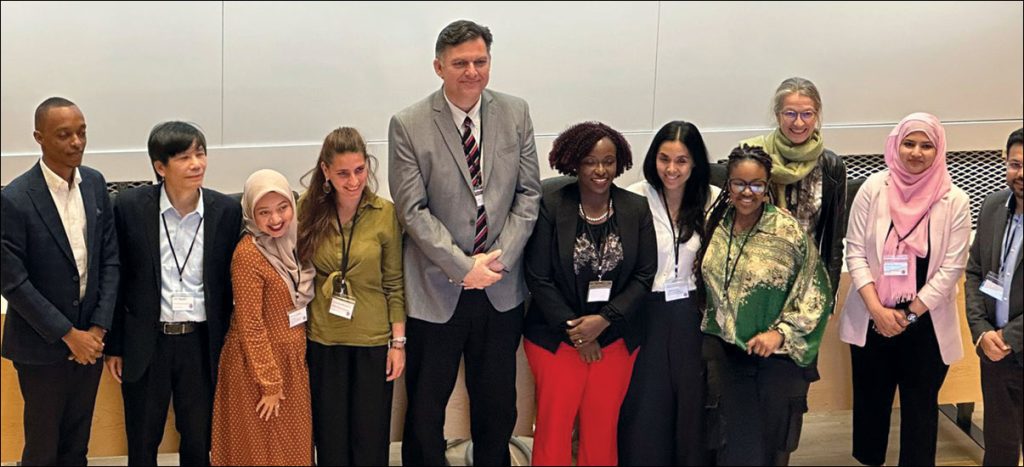The demons are innumerable, appear at the most inconvenient times and create panic and terror. But I have learnt that if I can master (them) and harness them to my chariot, they can work to my advantage.
Ingmar Bergman
(1918-2007) acclaimed Swedish film director and screenwriter.
The first impression when one lands in Stockholm is the stillness. The calm pervades everything. There is no one shouting or yelling, no one pushing to get past, no one trying to get somewhere in a hurry careless of others around them. Swedes, at least the ones we encountered in Stockholm, can best be described as calm and phlegmatic. Our second impression was the weather. Our driver from the airport told us that we had landed at just the right time. Even a few days before, there had been light snow but the time we were there, it was cool and sunny, and it seemed the entire population of Stockholm was outdoors soaking in the precious summer sun which rises after 6 long months of dark winter. Due to Sweden’s geography, winters are both cold and dark with the sun barely rising for a couple of hours each day. In the summer, it is the opposite: while we were in Stockholm, it was bright sunshine at 5 am and barely dusk at 10 pm and the days were still getting longer. In the northernmost parts of the country, a dim light pervades all through the brief night before the sun shines again, the famous ‘white nights’.

Group photograph shows the participants of the meeting held at Sweden on Youth Mental Health.
As invited delegates for a youth mental health conference organized by UNICEF at the world famous Karolinska Institute, we were eagerly looking forward to our first visit to Scandinavia. And Sweden did not disappoint. We learned, for example, that adolescent mental health problems, which predict the course of adult life are present in every 7th adolescent in the world; that 1/3rd of adolescents will have some combination of anxiety and depression which will impair their functioning by age 14. This rises to 50% of young people by age 18 and 75% by age 24. Having parented, with my wife, three young people the youngest of whom is now almost 18, I can attest to these figures and how it took all my skills as a mental health professional and liberal help from my wife, family members and colleagues to get my children through their turbulent teen years and we are an affluent, educated family with access to every possible resource we could need, much more than can be said for most Pakistani families. We also learnt that unhealthy and risky behaviors in teenage years can lead to a huge rise in preventable deaths from non-communicable diseases later in adult life globally. It has also been a revelation to know that countries across the world, from Sweden itself, to other European nations, countries in Asia, Africa and the Americas are all striving mightily to preserve and protect the mental health and well-being of their young people, who number a staggering 1.3 billion people worldwide, almost 17% of the global population and the people who will be carrying the world forward into the 21st century. This is crucial because mental illnesses are detrimental to society in a myriad of ways which include a huge economic cost from lost wages and productivity. And the ultimate ‘end result’ of untreated mental illness can be loss of life by suicide of which 700,000 happen each year globally. It is the 4th leading cause of death in young people aged 15-29 in the world.
My colleagues and I from Pakistan, representing two large universities presented the findings of our global ‘Being’ project, a 12-country initiative which aims to change the landscape of youth mental health in the target countries by engaging youth, mental health advocates, policy makes and legislators, funding agencies, local governments, schools and other educational institutions and many other agents of change. In the target countries, which include Pakistan, India, Indonesia, Colombia, Ecuador, Egypt and others, our findings have revealed many similarities regarding what affects the mental well-being of youth: social media usage, academic pressures, parenting styles, substance use, anxiety and depression, bullying and others. The similarities argue for a combined approach to youth mental health and the need to learn from each other about how we can do better for our young people. I also spoke about a regional network of South Asian countries of which Pakistan is a part called the Child and Adolescent Mental Health South Asia Network (CAMHSAN https://www.camhsan.org/) which includes India, Bangladesh, Sri Lanka, Nepal, Bhutan, Maldives and Afghanistan. In this group, our countries are even more closely matched regarding factors affecting youth mental health and we have been brainstorming for more than a year about how we can move forward.
We also saw in Sweden what a robustly government funded and supported society can look like. Sweden has universal health coverage with high public funding and a tax supported education system that ranks one of the best in the world with higher education completely free to Swedish citizens. We personally sampled the benefits of Stockholm’s outstanding public transit system which makes personal cars completely redundant. The city is crisscrossed by a variety of trains, bus and tram lines which one can ride for a small fee and which can take one to anywhere in the city.
All in all, it was an illuminating first trip to Scandinavia, a region that ranks at or near the top in many global health standards including surveys of happiness and satisfaction with life. The reasons are, of course, those already mentioned: very little income inequality, a strong, supportive, generous state that provides safety and security to all citizens, not just a select few, strong institutions designed for the benefit of the population at large etc. It was interesting to learn that Sweden is grappling with protecting the mental health of its youth as well, but they are surely ahead of us in many measures. Our challenge is much more fundamental: education, employment, health and safety for our young people. If we can begin work on that, it will be a good start.
*The writer is a psychiatrist and faculty member at King Edward Medical University.



